Plan your Suzhou tour? Suzhou is just less than a 30-minute highs peed train ride from Shanghai or 2 hour from Hangzhou. The Suzhou Railway Station for high speed trains is located on the north of the city moat in Suzhou.
One of the must-see attractions in Suzhou is the Humble Administrator’s Garden (拙政园), crowned as the World Cultural Heritage Site along with other classical gardens of Suzhou.
How to get to the Humble Administrator’s Garden
Most of the must-see attractions in Suzhou are walkable within the ancient city wall including the Humble Administrator’s Garden, Lion’s Grove Garden, Canglang Garden, Lingering Garden, Garden of the Master of the Nets, Suzhou Museum, and Pingjiang Road in Suzhou.
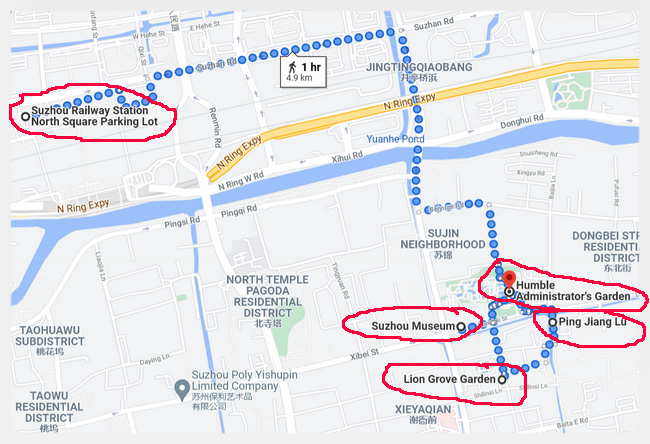
The Humble Administrator’s Garden is located at 178 Dongbei Jie along the Dongbei Pedestrian Street (东北步行街) in the northeast of the downtown Suzhou, just a few steps east of Suzhou Museum and not far to the north of the Lion’s Grove Garden and Pingjiang Road in Suzhou.
So basically you can cram these attractions together with the Humble Administrator’s Garden on a day tour in Suzhou.
The Humble Administrator’s Garden is easily accessible by public buses – Tourism Bus No.01, Tourism Bus No.02, Bus No.313 and get off at the stop of Suzhou Museum (苏州博物馆) since Suzhou Museum is very close to both the Administrator’s Garden and the Lion’s Forest Garden.
Entrance Fees
Off-season: 70 yuan/person (January, February, March, June, November, December)
Peak Season: 80 yuan/person in peak season (April, May, July, August, September, October)
Opening Hours
7:30~17:30 (March 1 ~ November 15) and 7:30~17:00 (November 16 ~ February 29).
ABC of the Humble Administrator’s Garden
The Humble Administrator’s Garden is one of the four most famous private gardens in Suzhou together with the Lion’s Grove Garden, Canglang Garden and the Lingering Garden. The Humble Administrator’s Garden is typical of the classical gardens in Ming Dynasty.
The Humble Administrator’s Garden is also on the top list of the four most famous gardens in China, the other three being Summer Palace in Beijing, the Summer Resort in Chengde and Lingering Garden in Suzhou.
The garden’s original site can be traced back to the residence and garden built by a scholar named Lu Guimeng in Tang Dnasty. In Yuan Dynasty, the site was turned into a temple called Dahong Temple. In 1509, a retired imperial envoy in Suzhou named Wang Xiancheng purchased the temple and began to build the garden.
Wang Xiancheng worked on the garden in collaboration with the local famous artist, his friend, Wen Zhengming. The garden was named “the Humble Administrator’s Garden to express his desire to keep from politics and enjoy a carefree life – planting trees, growing vegetables, building his own houses.
It took 15 years to complete. After his death, Wang Xiancheng’s son lost the garden to pay for his gambling debt. In the past 400 years, the garden changed many hands. In 1949 all the garden were rejoined and restored to its original site in 1952. In 1997 the garden was listed as UNESCO world heritage site.
The layout of the Humble Administrator’s Garden
The Humble Administrator’s Garden is mainly composed of three parts set about around a lake – East Part, West Part and Central Part. The East Part is called “Guitianyuanju” which literally means Living After Returning to the Countryside. The East Part features the pavilions, Pine trees and the lawn and Pinggangyuan Hill.
The West Part is known as “Subsidiary Garden”. It consists of the ponds, rockeries, the water corridor and the streams, the masterpiece of Suzhou classical gardening.
The Central Part is the main garden of the Humble administrator’s Garden set around a lake. The pavilions and the rockeries are built around the lake, featuring the water town in the Yangtze River Delta.
Virtual Tour of the Humble Administrator’s Garden
The Humble Administrator’s Garden is located along the Dongbei Pedestrian Street (178 Dongbei Jie).
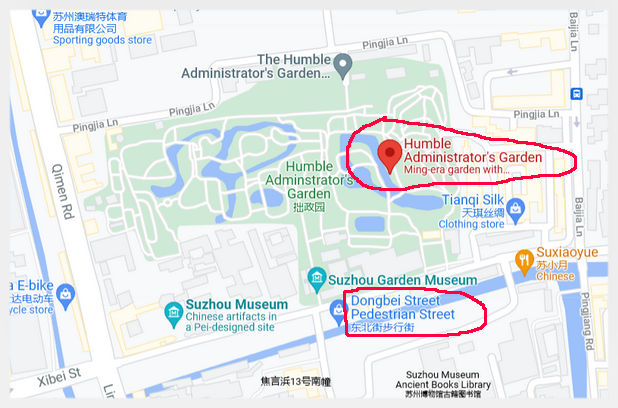
The main entrance (south) to the Humble Administrator’s Garden.
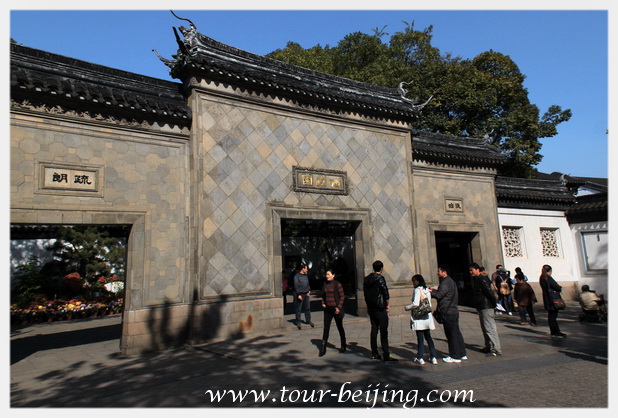
Entering the main gate, you are in the eastern part of the garden and you will first visit Lanxuetang Hall where there is a panoramic map of the the Humble Administrator’s Garden. Lan Xue Tamg Hall is the first scene of the garden tour.
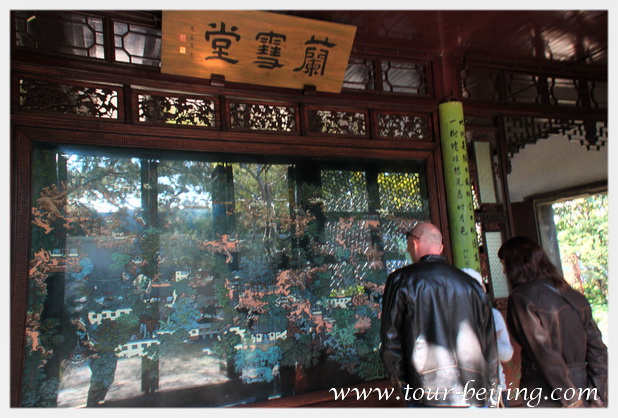
Furong Pavilion (芙蓉榭) is a square landscape building in the east of the Humble Administrator’s Garden. It is located in the north of the main hall LAN Xue Tang and the east end of the big lotus pond.
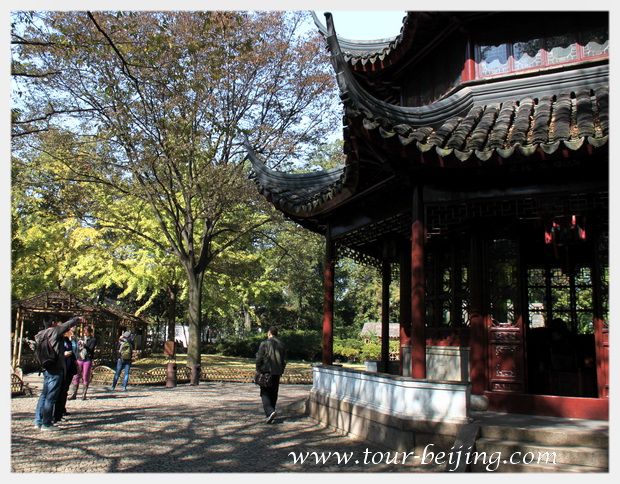
The lake view borrows the North Pagoda outside the garden. The zigzag bridge, the pavilions, weeping willows and the lake.
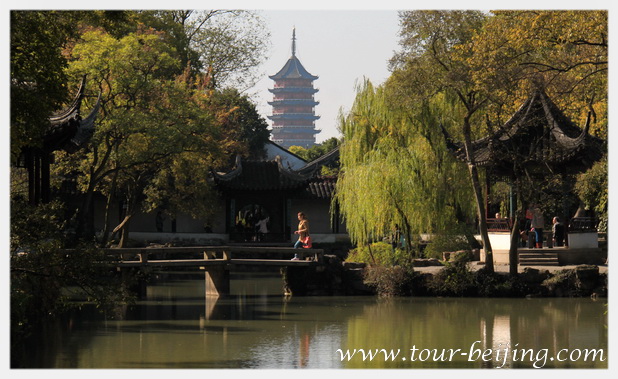
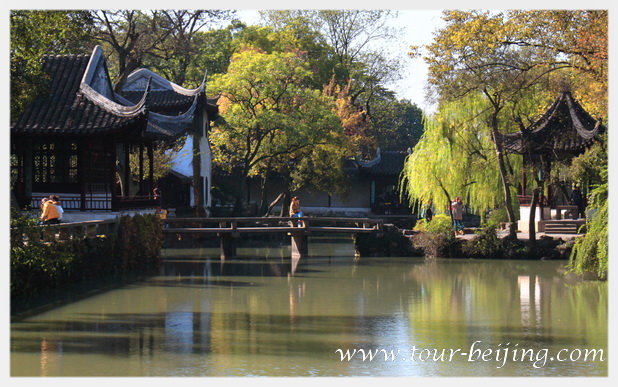
The central garden is set out around the lake. The long corridor runs along the lake and the willow trees with reflections the water.
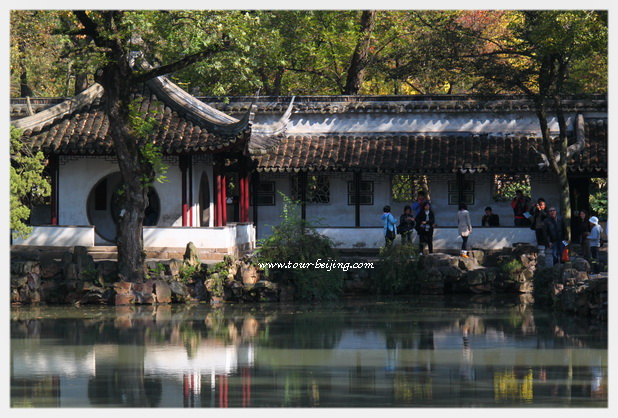
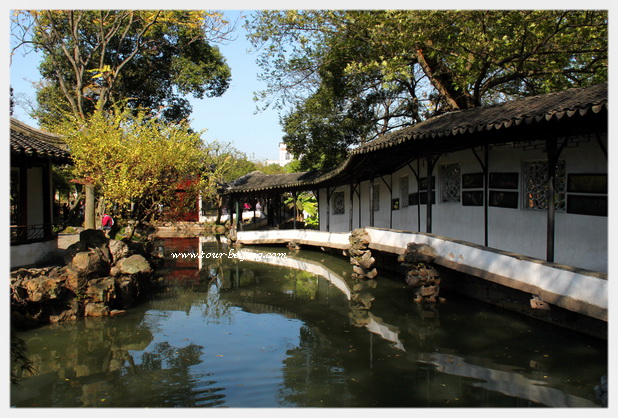
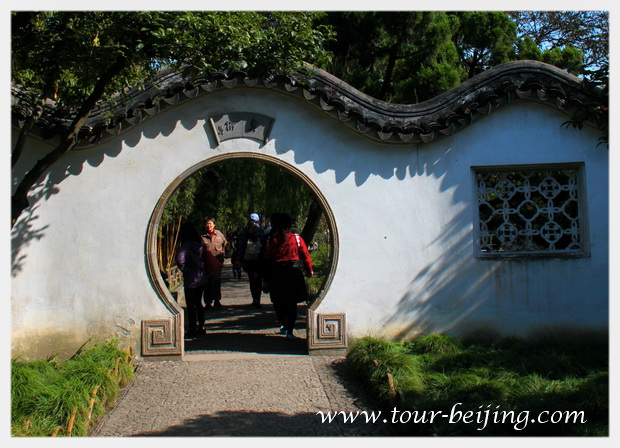
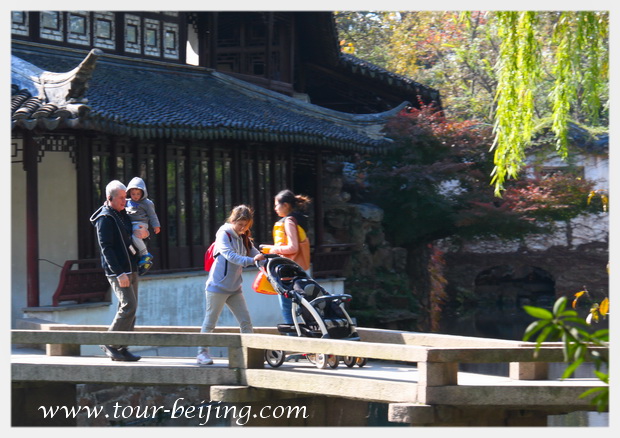
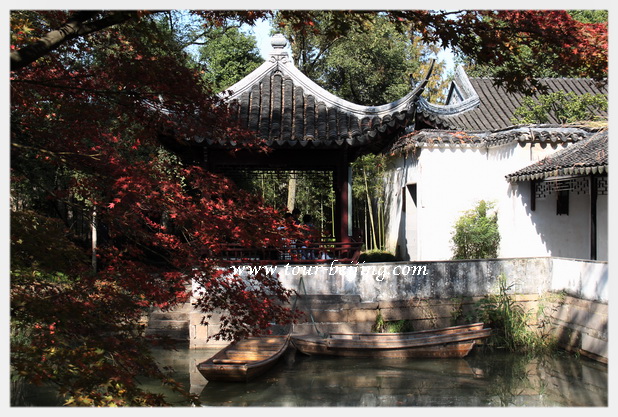
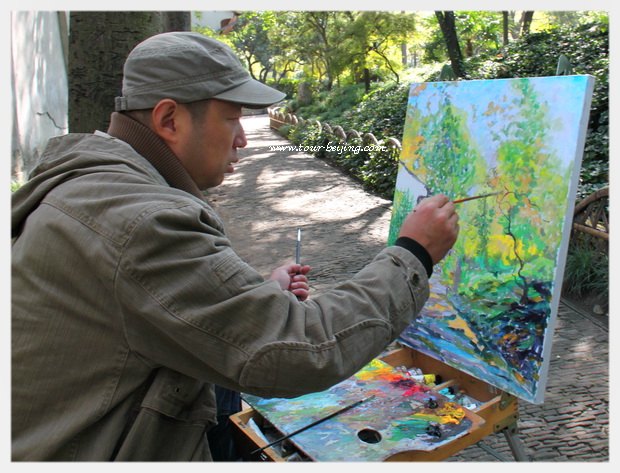
Tip: Hassle-free Jiangsu Guided Tours
If you don’t want to do a self-guided tour and prefer the hassle-free escorted tours, here are some options for organized tours to Jiangsu Province:
Suzhou Tour
Nanjing Tour
Jiangsu Tour
Further Readings
Top 10 Attractions in Suzhou
How to Visit Tongli Water Town
How to Visit Zhouzhuang Water Town
How to Visit Pingjiang Road in Suzhou
How to Visit The Garden of the Master of the Nets
How to visit Humble Administrator’s Garden
How to Visit Lion Grove Garden
How to Visit Canglang Pavilion
How to Visit Guanqian Street in Suzhou
4 Amazing Short Trip Ideas from Shanghai
Wuzhen Pictures – Wuzhen Photo Gallery
Zhouzhuang Pictures – Zhouzhuang Photo Gallery
Top 10 Attractions in Nanjing
How to Visit Nanjing Massacre Memorial Hall
How to Visit Nanjing Confucius Temple-The Qinhuai River Scenic Area
How to Visit Zhonghua Gate Nanjing
How to Visit Nanjing Yangtze River Bridge
How to Visit Linggu Temple Scenic Area
Sun Yat-sen Mausoleum Music Stage
How to Visit Dr. Sun Yat-sen’s Mausoleum
How to Visit Ming Xiaoling Mausoleum
How to Visit Nanjing Presidential Palace
Nanjing South Railway Station
Nanjing Taxi: Nanjing Taxi Fares, Tips and Phones
Suzhou Railway Station
Suzhou Taxi: Suzhou Taxi Fares, Tips and Phones
Any questions, just drop a line.





